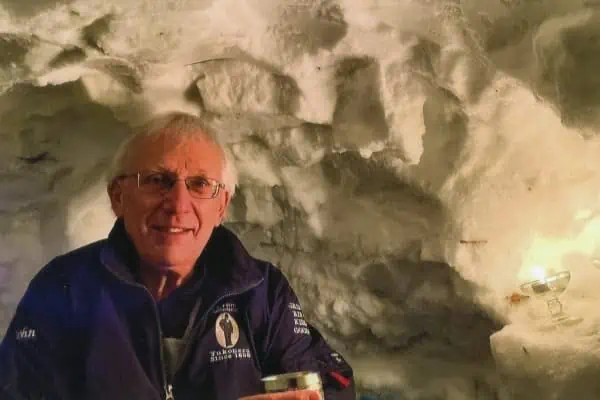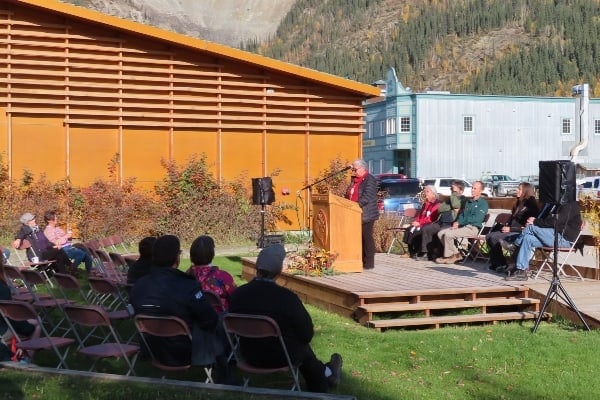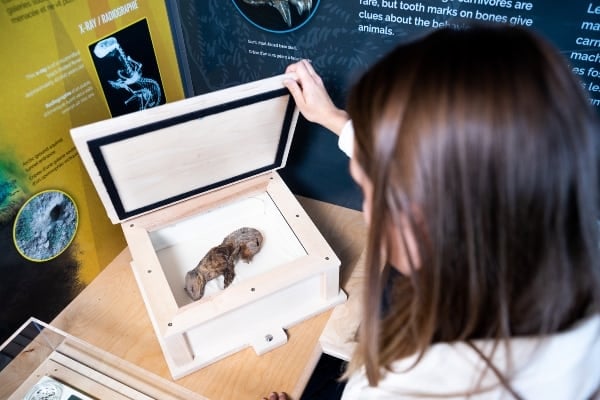Out on the old Alaska Highway, halfway to Haines Junction and only a few kilometres from Champagne, an observant traveller may spot Kwaday Dan Kenji, or Long Ago People’s Place.
The privately-owned camp, the only one of its kind in the Yukon, represents two decades of Harold Johnson’s dedication to preserving and sharing Champagne and Aishihik culture.
Johnson says he started it back in 1995 because “First Nation culture was hardly known” to outsiders, and he wanted to “retain and enhance” the knowledge he received from elders in his community who never went through the mission school system.
First called simply “First Nations Camp,” it was soon given the name Kwaday Dan Kenji by the elders advising on the project.
When Johnson first began, he was supported by 13 elders, including Sam Williams, Moose Jackson, and Marg Jackson.
He tells several of their stories as he guides a visitor around the camp – explaining how the story of how Crow stole the sun reveals that his people had known the earth rotated around the sun thousands of years ago.
He smiles as he recounts Sam Williams laughing at him when he asked who invented the dead-fall trap. Johnson’s smaller version of the trap is located in the “old camp” part of the site, an area full of buildings he built himself, demonstrating ways of life in ancient and pre-contact times.
He says that one of the living spaces he made, sheltered by rolls of spruce bark and entirely waterproof when completed, “is like art; everything is the medium.”
The old camp is surrounded by a caribou fence Johnson built himself, a structure used for trapping migrating caribou.
In the main area of the camp, which was originally two natural meadows, stands a small, red Department of Indian Affairs cabin, which Johnson moved from Champagne.
In 1998, he painstakingly moved a cabin his grandfather, Field Johnson, built in Cracker Creek in the early 1900s.
Until this year, the camp has been advertised mostly by wordof-mouth. Before the Alaska Highway was diverted away from Champagne, Long Ago People’s Place attracted a lot of highway traffic.
Now, although Harold admits it’s nice that the camp is more remote, he says he misses the dropin visitors.
The most common guests to Kwaday Dan Kenji are school groups of up to 20 people, although the camp has played host to conventions of up to 150, as well as chief and council meetings.
The camp has been featured on familiarization (FAM) tours for journalists and tour operators, and on programs such as Canada Over the Edge and On the Road Again.
Johnson’s vision for the future of Kwaday Dan Kenji includes expanding on the old camp to include even more aspects of traditional life, such as exhibits and demonstrations of clothing, snowshoes, and canoe and boat making.
As the camp is a three dayhike to Klukshu in one direction and a two-day hike to Kynocks in the other, he also hopes to branch into hiking and promote more engagement with the land, perhaps even opening a campground with traditional shelters for hikers and visitors to overnight in.
Johnson is inviting members of the community, local industry and government to come and explore Long Ago People’s Place on August 23, to learn about the history and traditions he has been sharing with visitors for the past 20 years.
They will be offered free tours of the entire camp as well as food and beverages, including tea and bannock made on-site.
Johnson hopes this anniversary will help attract more visitors to the camp, as he has seen firsthand that the experience “helps foster respect and understanding” of First Nations culture.




